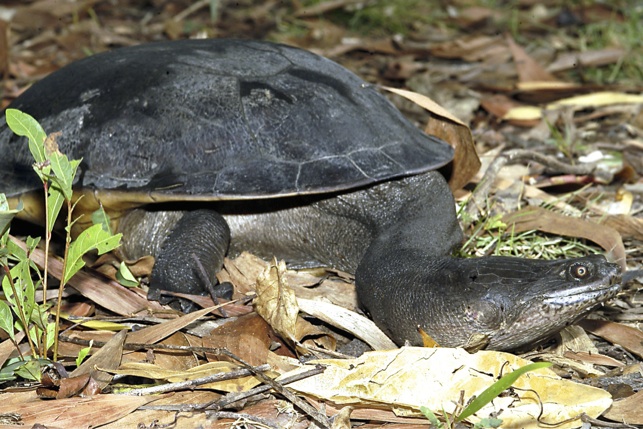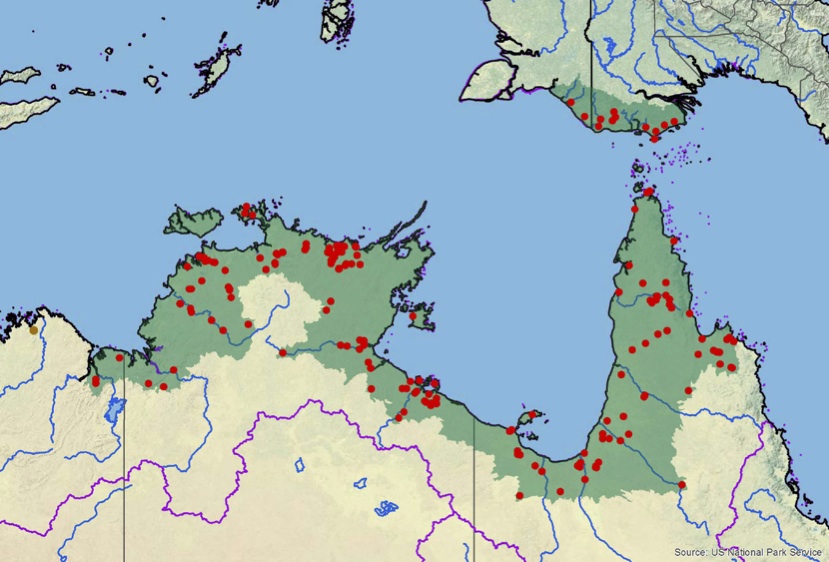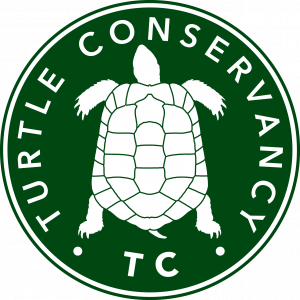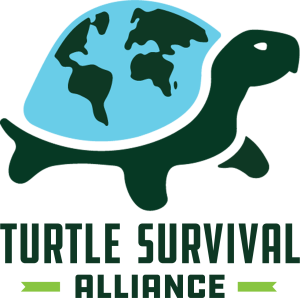Chelodina oblonga, 077
Chelodina oblonga Gray 1841 –
Northern Snake-Necked Turtle*
Rod Kennett1,5, Damien A. Fordham2,3,
Erica Alacs2, Ben Corey4, and Arthur Georges2
1North Australian Indigenous Land and Sea Management Alliance (NAILSMA),
Charles Darwin University, Darwin, Northern Territory 0909, Australia;
2Institute for Applied Ecology, University of Canberra, ACT 2601, Australia
[[email protected], [email protected]];
3The Environment Institute and School of Earth and Environmental Sciences, University of Adelaide,
South Australia 5005, Australia [[email protected]];
4Bawinanga Aboriginal Corporation, Maningrida, Northern Territory 0822, Australia [[email protected]];
5Present Address: Australian Institute of Aboriginal and Torres Strait Islander Studies,
GPO Box 553, Canberra ACT 2601, Australia [[email protected], [email protected]]
Summary. – The Northern Snake-necked Turtle, Chelodina (Macrochelodina) oblonga (Family Chelidae), until very recently known as C. (M.) rugosa, is a fairly large freshwater turtle (carapace length to 360 mm) with a broad distribution in tropical northern Australia and southern New Guinea. Its preferred habitats are seasonal wetlands on the coastal floodplains and adjacent hinterlands. These habitats undergo extensive flooding during the tropical wet season, with declining water levels during the following dry season; many waterholes dry completely. The species survives the dry season by migrating to permanent water or by estivating under the mud of dried waterholes. It is a highly prized food item among Aboriginal people, and turtles are collected each year in a harvest that has occurred for many millennia. The species is exclusively carnivorous and feeds on a range of fast-moving aquatic invertebrates, tadpoles, and fish. It is a highly fecund, fast-growing, and early-maturing species in comparison to most other Australian chelids. Its habit of nesting underwater makes it unique among all turtles. Nesting commences in the wet season (February) and is mostly complete by July (mid-dry season), though gravid females can be found as late as September if waterholes remain inundated. Eggs are laid in holes dug in mud under shallow water in the littoral zone of flooded waterholes. Embryonic development remains arrested while the nest remains flooded, but recommences when floodwaters recede and the ground dries. Embryonic development proceeds during the dry season and hatchling emergence coincides with the heavy rainfall or flooding in the following wet season. The species remains common in all the major river systems across northern Australia and southern New Guinea, and is sustainably harvested for traditional consumption in Australia, but is under some threat there from pig predation.
Distribution. – Australia, Indonesia (Papua), Papua New Guinea. Floodplains and adjacent hinterland of northern Australia, ranging in the west from the Victoria River of the Northern Territory and extreme northeastern Western Australia; in the east to the rivers draining east and west on Cape York, Queensland, south to the Normanby drainage; also in coastal tea tree swamps of southern New Guinea.
Synonymy. – Chelodina oblonga Gray 1841, Chelodina rugosa Ogilby 1890, Chelodina oblonga rugosa, Macrochelodina rugosa, Macrochelodina rugosa rugosa, Chelodina (Macrochelodina) rugosa, Chelodina siebenrocki Werner 1901, Chelodina oblonga siebenrocki, Macrochelodina siebenrocki, Macrochelodina rugosa siebenrocki, Chelodina intergularis Fry 1915, Macrochelodina billabong Wells and Wellington 1985 (nomen nudum), Chelodina billabong, Chelodina kuchlingi Cann 1997, Macrochelodina kuchlingi.
Subspecies. – None currently recognized.
Status. – IUCN 2013 Red List: Not Listed (Least Concern, LC, assessed 1996), TFTSG Draft Red List: Near Threatened (NT, assessed 2011); CITES: Not Listed; Australian EPBC Act: Not Listed; All State and Territory legislation: Not Listed.
* Until very recently this species was known as Chelodina rugosa Ogilby 1890. See full discussion under Taxonomy.
Citation:
Kennett, R., Fordham, D.A., Alacs, E., Corey, B., and Georges, A. 2014. Chelodina oblonga Gray 1841 – Northern Snake-Necked Turtle. In: Rhodin, A.G.J., Pritchard, P.C.H., van Dijk, P.P., Saumure, R.A., Buhlmann, K.A., Iverson, J.B., and Mittermeier, R.A. (Eds.). Conservation Biology of Freshwater Turtles and Tortoises: A Compilation Project of the IUCN/SSC Tortoise and Freshwater Turtle Specialist Group. Chelonian Research Monographs No. 5, pp. 077.1–13, doi:10.3854/crm.5.077.oblonga.v1.2014, //iucn-tftsg.org/cbftt/.
(Adobe Acrobat 6.0 or later required)

Female Chelodina oblonga from Tonda Creek, Morehead River, Western Province, Papua New Guinea.
Photo by Arthur Georges.
Distribution:

Distribution of Chelodina oblonga in northern Australia and southern New Guinea (Indonesia and Papua New Guinea). Purple lines = boundaries delimiting major watersheds (level 3 hydrologic unit compartments – HUCs); red dots = museum and literature occurrence records of native populations, based on Iverson (1992) and the addition of more recent and authors’ data; brown dot = type locality of the holotype of C. kuchlingi in Western Australia (synonymized with C. oblonga), a captive animal presumably originally collected elsewhere; green shading = projected native distribution based on GIS-defined HUCs (level 10) constructed around verified localities and then adding HUCs that connect known point localities in the same watershed or physiographic region, and similar habitats and elevations as verified HUCs (Buhlmann et al. 2009), and adjusted based on authors’ subsequent data.








